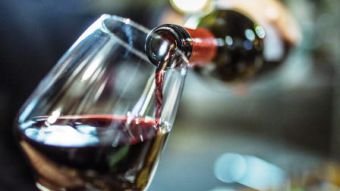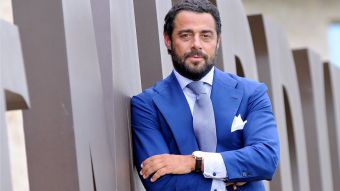Jacquesson, two brothers in the search of excellence.
CHAMPAGNE IS, FIRST AND FOREMOST, A FINE WINE WITH MAGICAL BUBBLES AND AROMAS.
Jean-Hervé and Laurent, Laurent and Jean-Hervé. This remarkable duo directs Jacquesson Champagne today. With them in the driving seat, the Champagne House has made a 360° turn in its philosophy and way of making champagne.
Established in 1798 in Chalons, France, Maison Jacquesson, directed by Chiquets in Dizy, is among a unique and extraordinary group of Champagne Houses which have adopted a new approach to champagne making. With a production of around 300,000 bottles, this Maison’s quest for supreme quality and excellence is the crux of its philosophy.
The Jacquesson brothers, Jean-Hervé (born 1957) and Laurent (born 1961), told our contributor, Joan Gómez Pallarès (www. devinis.org), that, when making their champagne, they have only one objective in mind: "to produce the best base wine possible". They also commented that they were "conscious of having been born in Dizy, and what this means within the champenois environment." When making decisions, they do so jointly and in agreement, but when running the Champagne House, each has their own role: Laurent has greater responsibility for everything to do with production while Jean-Hervé concentrates on the whole business of selling the champagne in France and abroad.
The majority of the almost 40 hectares of vineyards that they control are owned (28 ha) and the balance (8 ha) belongs to vignerons located near the company’s headquarters in Dizy. All the land, whether own or "rented", is situated in areas classified as Premier Cru and Grand Cru, and all sit within the Vallée de la Marne and the Côte des Blancs areas.
The brothers told us, "At Jacquesson, a good champagne is the result of: 1, well-worked land; 2, good viticulture; 3 and 4, more viticulture; 5, good vinification". When producing their champagnes, the Chiquets shun fads and fashions. During our visit, they confided to Joan Gomez Pallarès that the "Jacquesson style" is based on two important parameters: Burgundy savoir-faire, which they have been emulating for many years, and, above all, "our taste and our taste alone".
To obtain the excellent champagnes that they do, they have their methods: they control the yield for each vine, and they never, ever, carry out green harvesting. They plough the vineyards once and remove the weeds. To prevent unwanted humidity, the vines are trellised and short-pruned to ensure that the sun can get inside the vines. The sun is essential in Champagne and good maturation is indispensable for the grapes. They also ensure that the vines grow under stress. To sum up their approach in their own words ... "Sol et soleil” (soil and sun).
They are certified as a biodynamic winery, but you won’t see the logo on their labels. They don’t need to display it: those who need to know, know, and that’s enough for them. Many in their situation would boast that they are biodynamic ... but in this respect too, the Jacquessons are different.
Like everyone else, they are affected by climate change, but according to them "it only brings benefits: less cold, better maturity" and, thanks to the effects of climate change, "there are no longer any really bad vintages".
When making their wines, they use the first three extractions and sell the fourth to third parties. They use foudres (some 120 years’ old), which give their wines very special characteristics that perhaps only the most experienced of wine tasters can appreciate. They like to start each year from scratch as if it were a blank sheet of paper and, for them, the concept of “vintage” does not exist.
We had the pleasure of tasting some of these “tremendous” champagnes at their premises in Dizy, in the company of Jean-Hervé Chiquet. The vast majority of the champagnes are a blend of Chardonnay (about 45-55%), Pinot Noir (20-30%) and the remainder, Meunier.
738, base wine 2010. 18% Pinot Noir, 21% Meunier and the balance Chardonnay. The most vinous and energetic of the champagnes, as well as being the most discreet, fine and fresh.
737, base wine 2009. 27% Pinot Noir, 26% Meunier and 47% Chardonnay. A fuller-bodied champagne.
736, base wine 2008. 29% Pinot Noir, 18% Meunier and 47% Chardonnay. A more mineral, more austere champagne.
733, dégorgement tardif* (5 years)! A champagne “disgorged" in December 2013. 2005 base wine, mature without being over-mature, a very fine and extraordinary champagne.
Dizy Terres Rouges 2008, a rosé obtained by maceration, from vines planted in 1993. Very ripe red fruit, very vinous and gastronomic. This champagne is only produced in exceptional years, and only when they do not need the grapes for the "wines of the year".
* Dégorgement tardif (late disgorged): the intention behind champagnes with "dégorgement tardif" is to ensure that these are enjoyed at the right time, i.e. after they have had the cellar rest they require following their "disgorgement". Jacquesson and the Chiquets have the financial means, as well as the sensitivity, to “disgorge” and age these bottles in the cellar for several years. According to the writer of these tasting notes (@blogdevinis), "this makes them unique."





